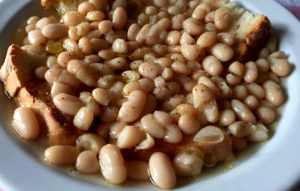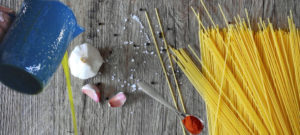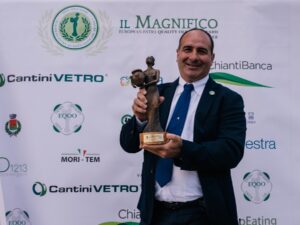Articolo disponibile anche in: Italian
Fine quality olive oil is delicious as well as healthy. PDO oil is a guarantee of quality.
These may seem like obvious statements but there are still a great many consumers who don’t know the difference between a PDO oil, an Italian extra virgin oil, and non-Italian or even non-extra virgin olive oils – and perhaps don’t care. These consumers choose what to buy based on the price, without understanding the real value of a PDP product.
However two spoons a day of Italian extra virgin olive oil, or better still, PDO oil, can prevent serious illnesses. Some Italian doctors have proved that oleic acid creates an anti-inflammatory barrier that can prevent, for example, some forms of tumour from growing.
The Food and Drugs Administration (USA), also maintains that oil is, to all intents and purposes, a “medicinal food”, if it contains at least 70% of oleic acid: Italian extra virgin olive oil certainly does. But although this information is easily accessible to everyone though multiple means of communication, there is still a great deal of confusion and even ignorance surrounding the oil sector.
The Chianti Classico Oil Consortium and 20 years as PDO
The first Consortium of Extra Virgin olive oil produced in Chianti Classico as a voluntary organisation dates back to 1975. From the beginning this structure defined strict regulations to obtain a traditional, fine quality product.
Then, with the year 2000, oil produced in the Gallo Nero hills obtained European recognition with PDO certification, thanks to those very specific chemical and organoleptic features that link it inextricably to its terroir of origin. Twenty years on, PDO Chianti Classico olive oil is still a small niche production, of very high quality.
Features of Chianti Classico PDO oil
Producers of Chianti Classico PDO olive oil must respect the production regulations, which are inspired by the need to guarantee consumers the highest possible standard of quality.
Let’s remind ourselves of those regulations: once picked the fruit must be processed within three days of harvesting, in temperature-controlled conditions; all PDO Chianti Classico oil is “cold-extracted” (the processing temperature may not exceed 27°C); the yield may vary from 3kg-2kg per tree, depending on the number of olive trees per hectare (but it is actually much lower); it must include at least 80% of olives from the four main varieties grown in the production zone (Frantoio, Correggiolo, Leccino and Moraiolo); the year of the olive harvest must always be shown on the label; lastly, it must correspond to certain chemical and organoleptic parameters which are an improvement on and/or more selective than those for non-PDO extra virgin olive oil.
Weather trend 2019 (by Fiammetta Nizzi Grifi, agronomist)
We signed off last year praising the plentiful production quantities, more than anything seen in recent years, and noting with pleasure the return of the Moraiolo variety to the prestigious Chianti Classico olive oil blend.
This year we are singing a different tune, as far as quantities are concerned, though still on a happy note for the quality of the oil.
In October, when we began harvesting the fruit, it was very hot – too hot. One day, the thermometer read 28° in Gaiole in Chianti, and 27° in Greve. The olives had ripened very quickly, and in some groves they were already ripe before the end of the grape harvest.
Then came the rain, endless rain. In a few days we had over half the rain that normally falls throughout the autumn, and the fields weren’t workable.
The temperatures went down, but not all that much, so the olives stopped ripening; but they couldn’t be harvested because the land was still unworkable.
The result was that many olives fell from the trees, and were lost.
An enormous amount of hard work and commitment was needed to produce Chianti Classico 2019 PDO olive oil just the same, and our growers did everything they could to produce high quality oil even in 2019.
The total quantities were hugely affected due to the weather and compared to the previous year’s harvest we suffered a 75% loss of oil destined for PDO certification and 50% of non-certified extra virgin oil.
Little but good. Despite all this, we are proud of the organoleptic qualities of our oil, and to have maintained the pleasant, piquant hints of fresh and aromatic herbs on the nose, typical of Chianti Classico PDO oil, and the bitter olive and raw artichoke flavours with a spicy finish of rocket, chilli pepper and black pepper.
All these features are typical of Gallo Nero PDO oil, and of the terroir, problematic for olive growing but generous in the complex sensations it offers.


